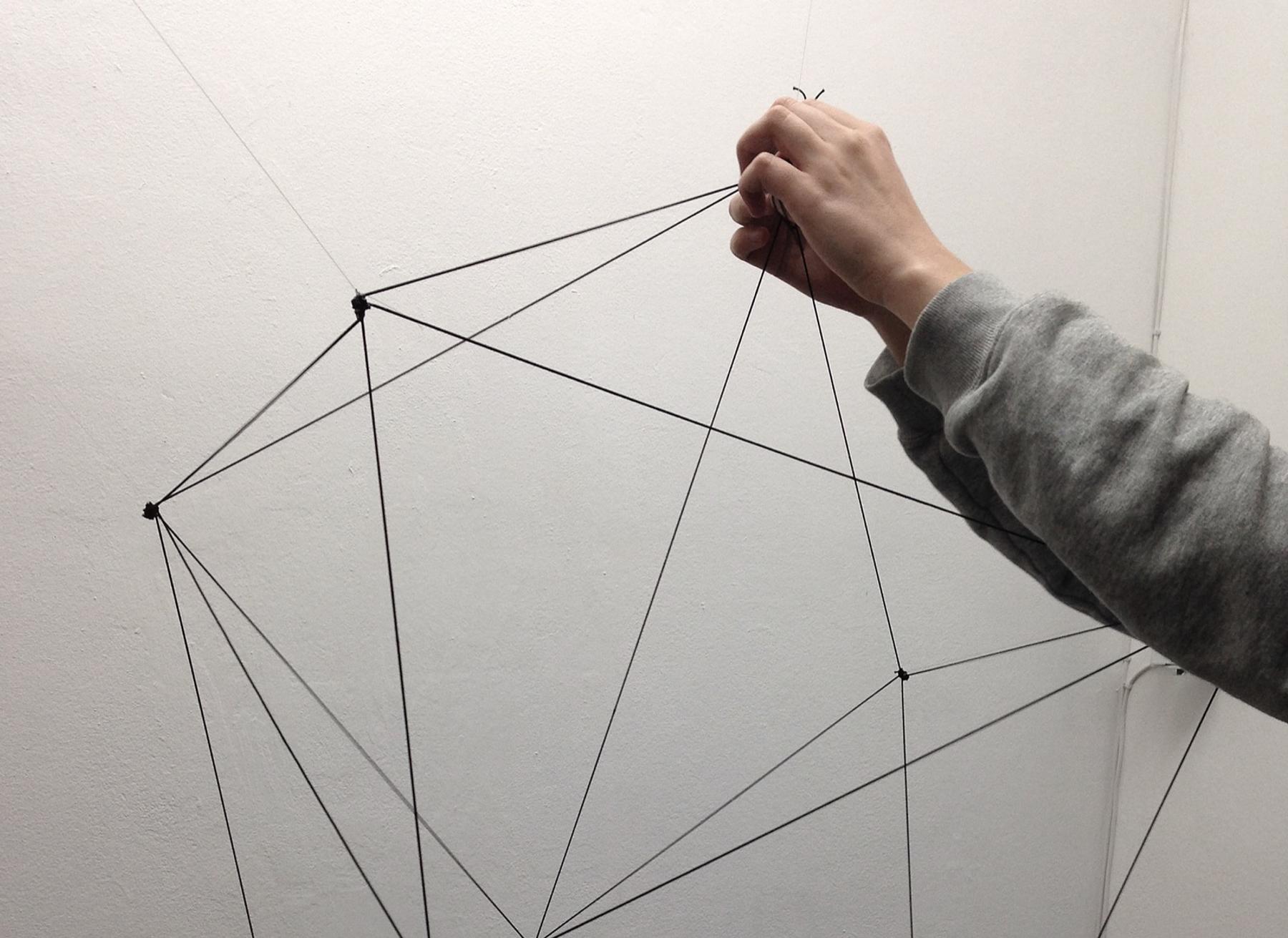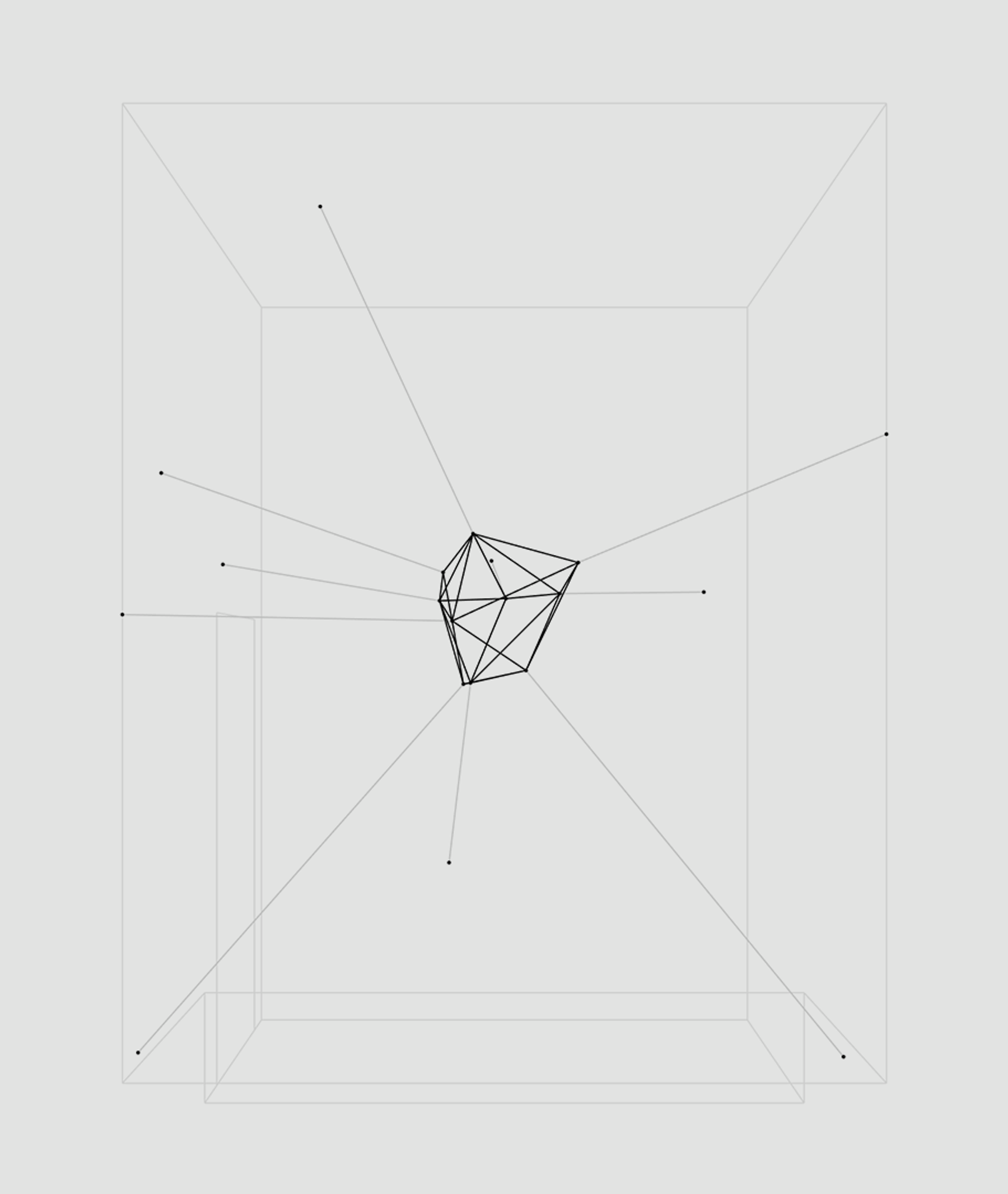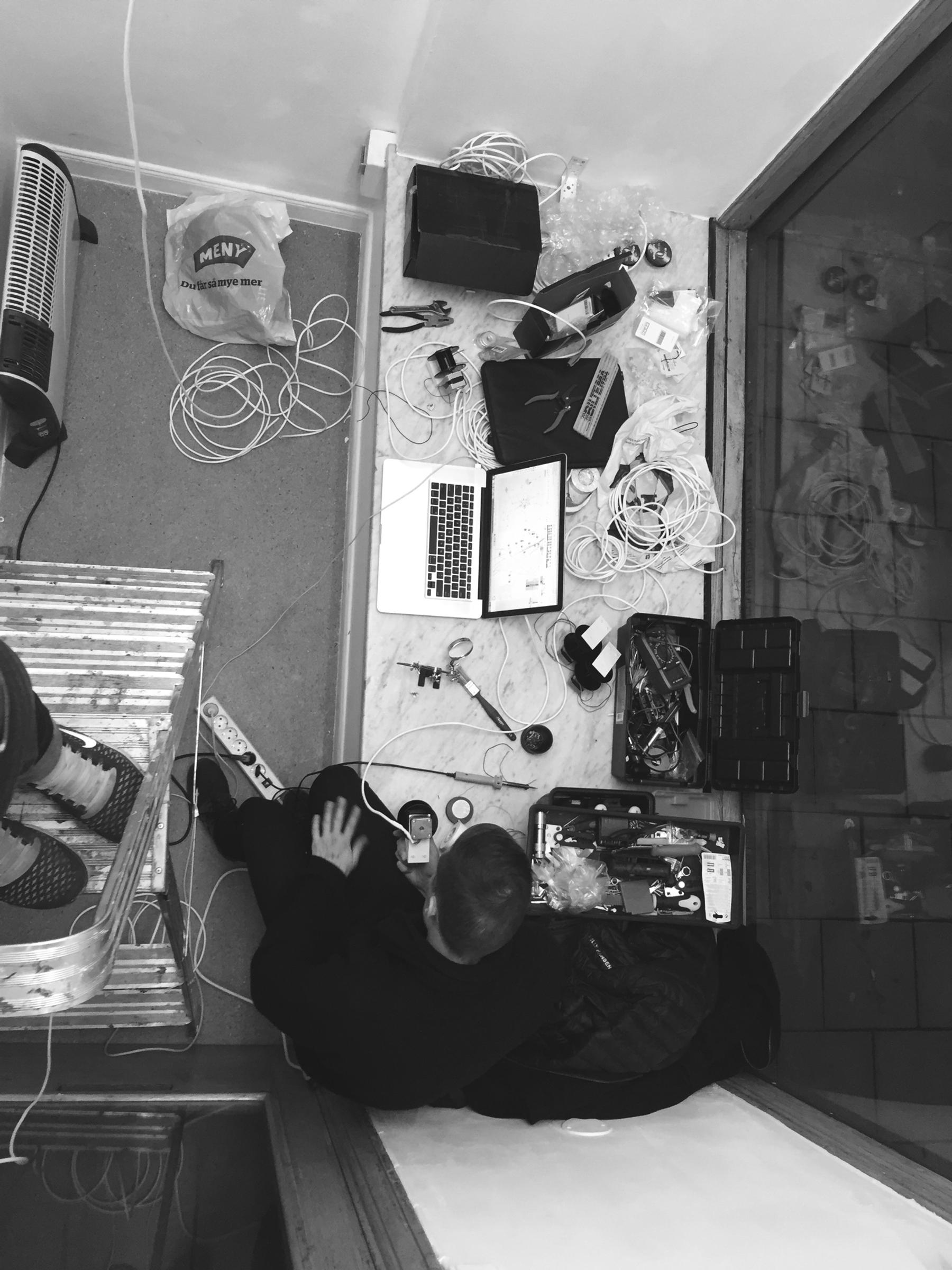Irregular Polyhedron Study #1
2014
installation
Elastic Band, Stepper Motors, Custom Electronics, C++ code
Kungstensgatan 27
Irregular Polyhedron Study #1 is a physical representation of the basic components of computer graphics; the vertex and the edge. The project was developed in collaboration with Norwegian architect Joakim Hoen (Void) as a site-specific installation for the window gallery at Kungstensgatan 27 in Stockholm.
The installation comprised a wireframe polyhedron constructed from black elastic bands suspended by fishing lines and connected to nine stepper motors controlled by five Arduino microcontrollers and an openFrameworks application that simulated the overall motion scheme. The geometry was procedurally generated using Rhino, Grasshopper, and Kangaroo physics simulation to create an optimal compromise between room dimensions, motor placement possibilities, and directional tension vectors toward each vertex. This digital model was then exported for physics simulation and converted into numbered measurements for cutting and connecting the physical string components.


The sculpture's behavior emerged as an erratic combination of multiple noise layers and randomness, punctuated by occasional kickback from stepper motors yielding to overall tension within the geometric structure. Rather than eliminating these mechanical inconsistencies, the system deliberately incorporated these unpredictable elements as integral features that contributed to the work's uncanny nervousness and apparent personality. This conscious embrace of systemic instability demonstrated how the translation between digital precision and physical materiality generates emergent behaviors that exist beyond programmed parameters, creating a dynamic equilibrium between control and chaos within the suspended geometric form.

